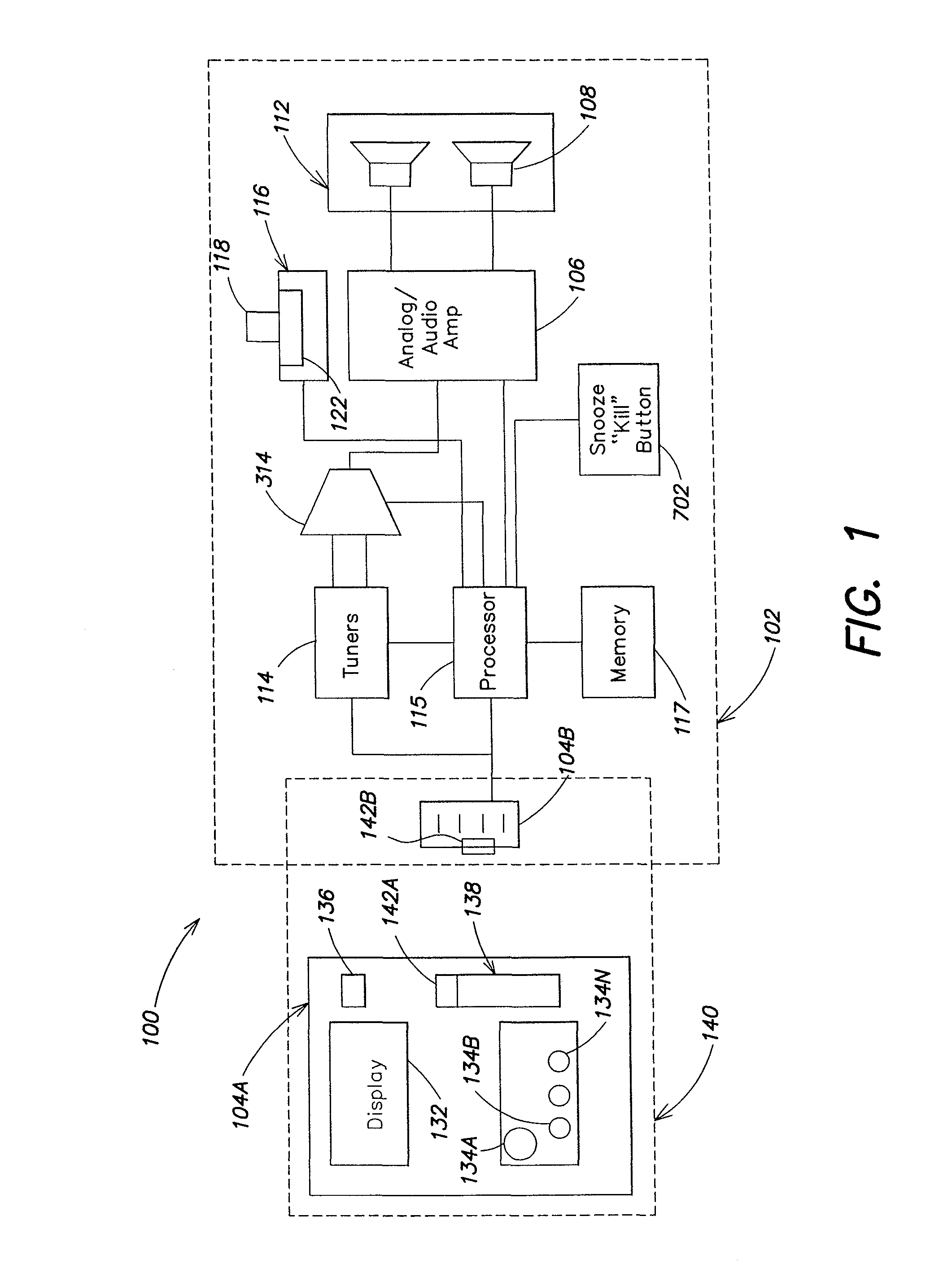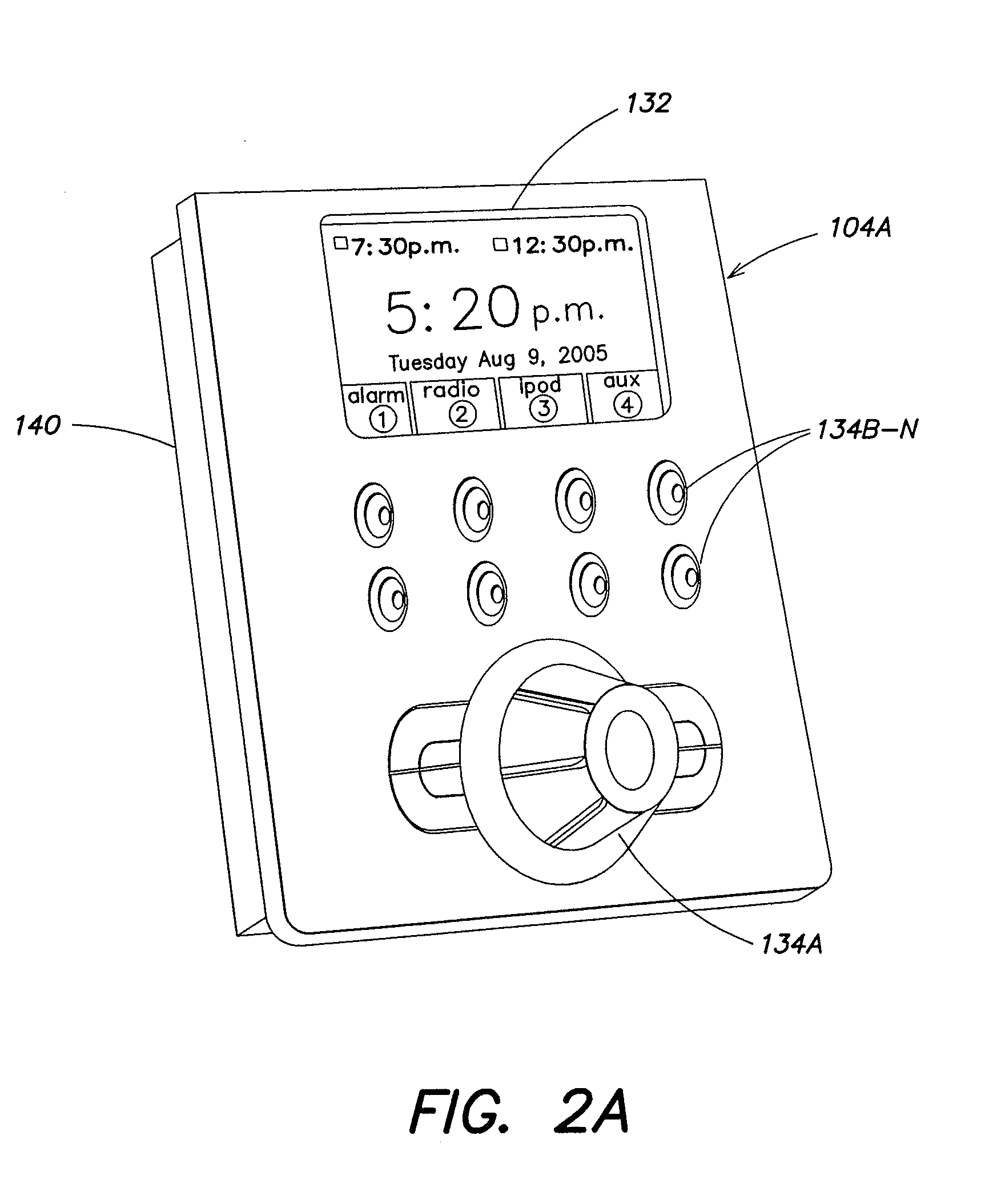Entertainment system with bandless selection including playlists
a technology of entertainment system and playlist, applied in the field of electronic entertainment system, can solve the problems of incompatibility of various devices, inelegant user integration, proprietary frequency, etc., and achieve the effects of convenient and easy-to-use hosting, simplified radio station tuning, and improved user experience for consumers
- Summary
- Abstract
- Description
- Claims
- Application Information
AI Technical Summary
Benefits of technology
Problems solved by technology
Method used
Image
Examples
Embodiment Construction
[0037]This invention is not limited in its application to the details of construction and the arrangement of components set forth in the following description of or illustrated in the drawings. The invention is capable of other embodiments and of being practiced or of being carried out in various ways. Also, the phraseology and terminology used herein is for the purpose of description and should not be regarded as limiting. As used herein, a “processor” can be implemented in any convenient way. It may, for example, be a programmable microprocessor or microcontroller, or it may be an application-specific integrated circuit (ASIC) or it may be hard-wired circuitry, or a neural network, or a gate array or FPGA (field-programmable gate array), or any other form of information processing device. A microprocessor is discussed as a practical example, not to be limiting. The use of “including,”“comprising,” or “having,”“containing,”“involving,” and variations thereof herein, is meant to enc...
PUM
 Login to View More
Login to View More Abstract
Description
Claims
Application Information
 Login to View More
Login to View More - R&D
- Intellectual Property
- Life Sciences
- Materials
- Tech Scout
- Unparalleled Data Quality
- Higher Quality Content
- 60% Fewer Hallucinations
Browse by: Latest US Patents, China's latest patents, Technical Efficacy Thesaurus, Application Domain, Technology Topic, Popular Technical Reports.
© 2025 PatSnap. All rights reserved.Legal|Privacy policy|Modern Slavery Act Transparency Statement|Sitemap|About US| Contact US: help@patsnap.com



